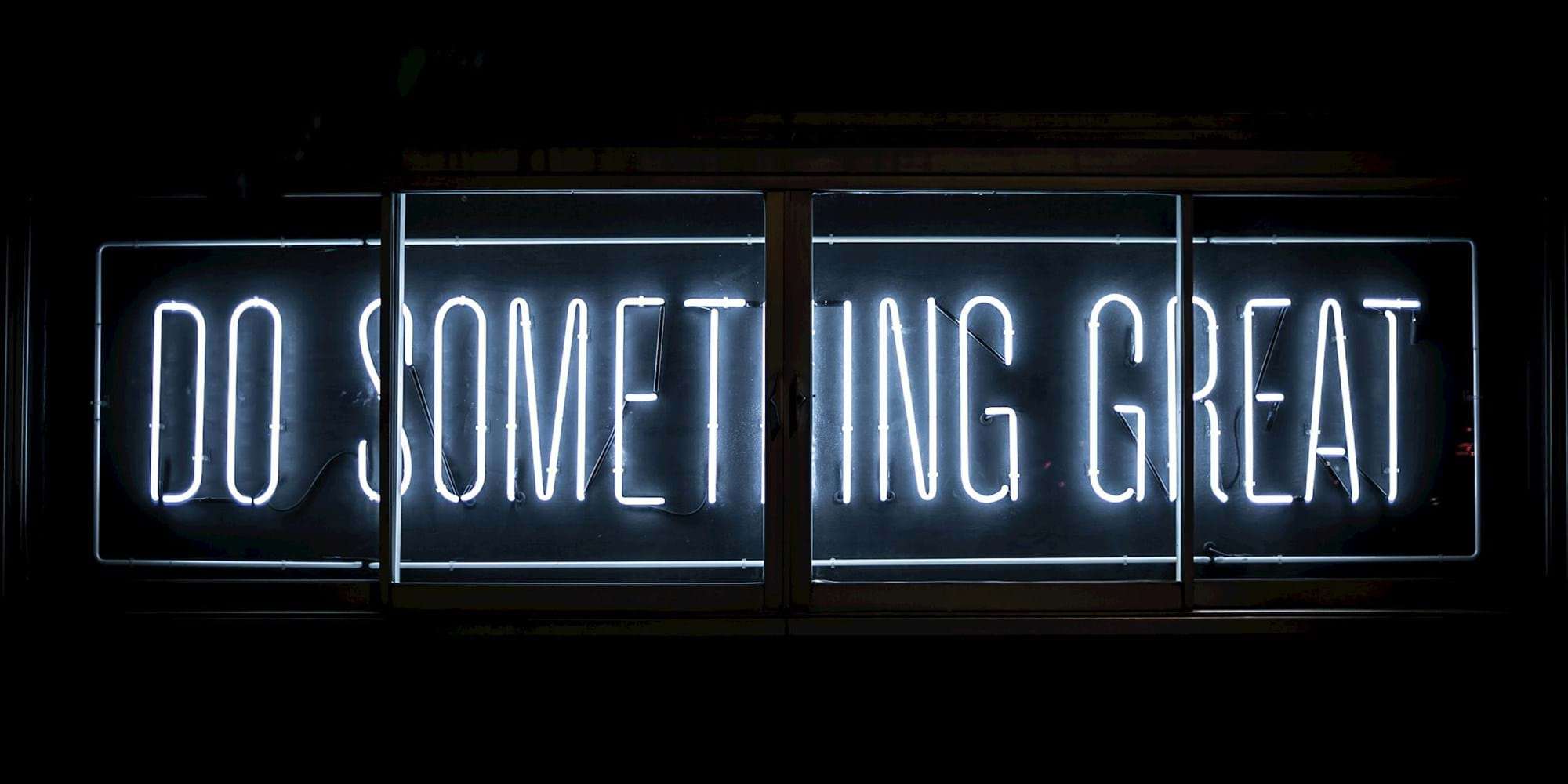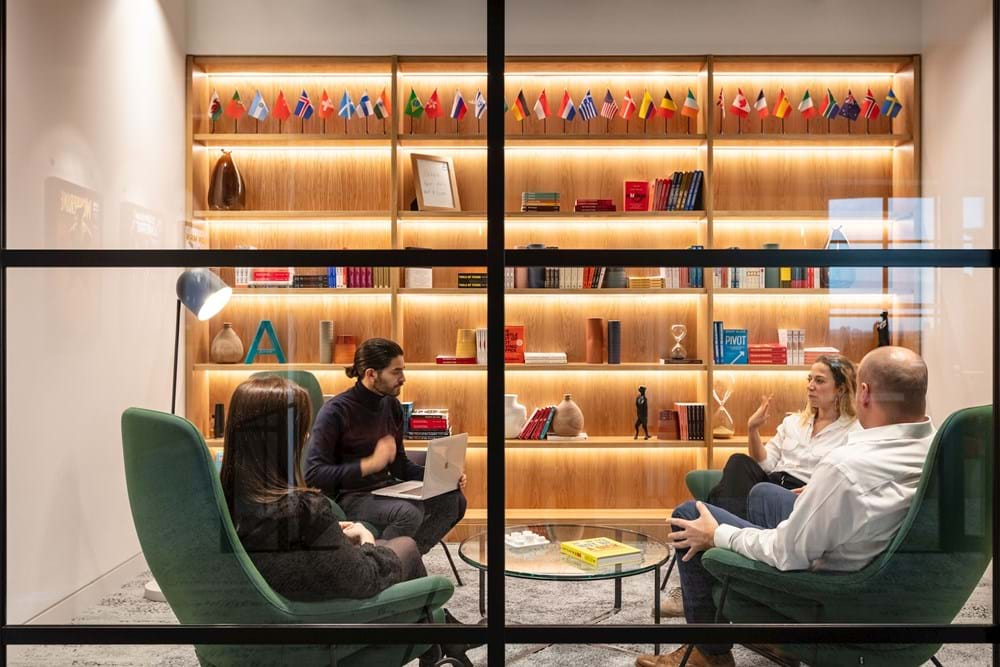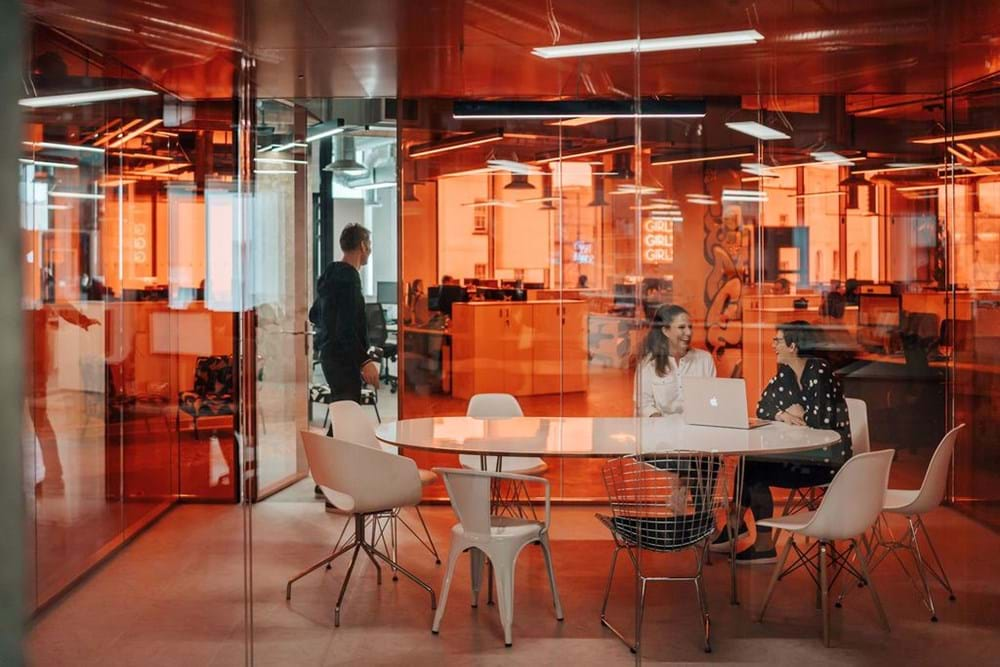The art of motivation
We examine four different schools of thought when it comes to looking at the reasons people act the way they do at work and in the world.
Neuroscientists have long been fascinated by what motivates people. They’re not the only ones. Those responsible for space planning and the design of office interiors, from a small office design to a big corporate fit-out, also consider the thoughts and actions of people to create spaces which boost physical and mental wellbeing. We’ve picked out a few key studies for understanding this better.

Go your own way
Self-Determination Theory recognises three basic psychological needs: the skill to complete a task, a person’s process of controlling what they do (autonomous motivation) and their connection to others. People’s actions are generally linked to aspects such as who they are as a person, their concern for the welfare of others and honesty, as well as their attitude to other factors, including financial wealth, fame, image, meaningful relationships and contribution to the community. Coupling company policy with a physical environment can reap dividends in terms of having motivated, well-performing staff, a feeling of belonging in relation to both bosses and peers and achieving a high level of workplace wellbeing. For example, if employers want their staff to feel confident and competent they could provide multiple meeting spaces for training and development. If they want to give their staff freedom to experiment and initiate their own behaviours, they could offer informal seating areas for interactions, whiteboard walls for ideas or phone booths for quiet work.
The library room at Alpha FX
Back to basics
Carol Dweck’s system of basic psychological needs has three fundamental parts. Firstly, there is the need for acceptance or positive social engagement. When Dweck talks about ‘optimal predictability’ she means knowing what’s likely to happen in your world: what follows what, what belongs with what, or what causes what. Knowing everything that’s going to happen isn’t ideal either, as the possibility of new or complex situations can also motivate people, likely why a desire for new challenges often crops in appraisals or job interviews. Then there’s building skills where additional requirements include the the need for trust, for control, for status and the need to feel rooted or together. The latter is crucial in an office move of course: letting your staff know what’s going on and how they can get the best out of their new office interior is essential. There is some degree of cultural difference with these needs too: what might be thought of as overly controlling in one company might be the norm in another.
Driving motivation
Harvard Business School professors Lawrence and Nohria came up with four drivers of human motivation: the drive to acquire, the drive to bond, the drive to learn, and the drive to defend. They say these are what enables mankind to survive and these complex motives and choices are what separates us from other species. Drilling into some of the detail - we can be self motivated and we need to show our status - think of the executive corner office with the best views that was commonplace in the past. But we also need our long term relationships and mutual commitment - so maybe that’s why we’ve seen a trend for the prime positions after an office move to be given over to shared staff areas, as a sign the senior leadership team care. The defence driver: to protect individuals and organisations can be looked at in the context of workplace wellbeing: making sure there’s space to move around or ample acoustic protection from noise. Interestingly, meeting all of these drivers at the same time is no easy feat - both in the office and beyond!
The red box at Studio 19, the international HQ for Studio 19
If need be
The pyramid of Maslow’s hierarchy of needs will be familiar to business students, workplace designers and psychologists alike. At the bottom it shows things such as air, water and clothing that are our most basic needs. Above that is safety, which takes in employment, health and property followed by love and belonging and, above that, esteem. The top tier is self actualisation: the desire to become the most that one can be: Maslow’s 1940s academic version of ‘be your best self’ one could argue. Whether a small office design or a larger company, that could mean the right balance of meeting rooms and workstations to get the job done, space to be physically fitter so cycle storage and showers or providing places for mental wellbeing like yoga rooms or meditative spaces. A 2006 study took Maslow’s self actualisation and looked at it as ‘self-transcendence’: getting satisfaction from doing things for others. You could pinpoint the rise in companies offering staff allocated paid leave to work on charity or community projects and other corporate social responsibility (CSR) initiatives as examples of this ‘self-transcendence’. Maybe even space planning elements like transforming reception or rooftop areas into more public facing spaces is a way the workplace can function to satisfy these fundamental human drivers.
Want to find out more about how you can create an office that motivates? Get in touch with us here.
Sources
Edward Deci, Anja Olafsen, and Richard Ryan. 2017. ‘Self-Determination Theory in Work Organizations: The State of a Science.’ In Annual Review of Organizational Psychology and Organizational Behavior, vol. 3, pp. 19-43.
Carol Dweck. 2017. ‘From Needs to Goals and Representations: Foundations for a Unified Theory of Motivation, Personality, and Development.’ Psychological Review, vol. 124, no. 6, pp. 689-719
Gomez-Baya and A. Lucia-Casademunt. 2018. ‘A Self-Determination Theory Approach to Health and Well-Being in the Workplace: Results from the Sixth European Working Conditions Survey in Spain.’ Journal of Applied Social Psychology, vol. 48, no. 5 pp. 269-283.
Mark Koltko-Rivera. 2006. ‘Rediscovering the Later Version of Maslow’s Hierarchy of 4 Needs: Self-Transcendence and Opportunities for Theory, Research, and Unification.’ Review of General Psychology, vol. 10, no. 4, pp. 302-317.
Paul Lawrence and Nitin Nohria. 2002. Driven: How Human Nature Shapes Our Choices. Jossey-Bass: San Francisco, CA.
Lauren Leotti and Mauricio Delgado. 2011. ‘The Inherent Reward of Choice.’ Psychological Science, vol. 22, no. 10, pp. 1310-1318.
Maslow. 1943. ‘A Theory of Human Motivation’. Psychological Review, vol. 50, no. 4, pp. 370-396.
This article is based on a research piece ‘The scientific systems behind the art of motivation’, authored by Sally Augustin, a practicing environmental design psychologist based in Chicago, for WORKTECH Academy. Workplace Futures Group is a Corporate Member of the Academy, which is a global online platform and membership organisation for the future of work and workplace.


